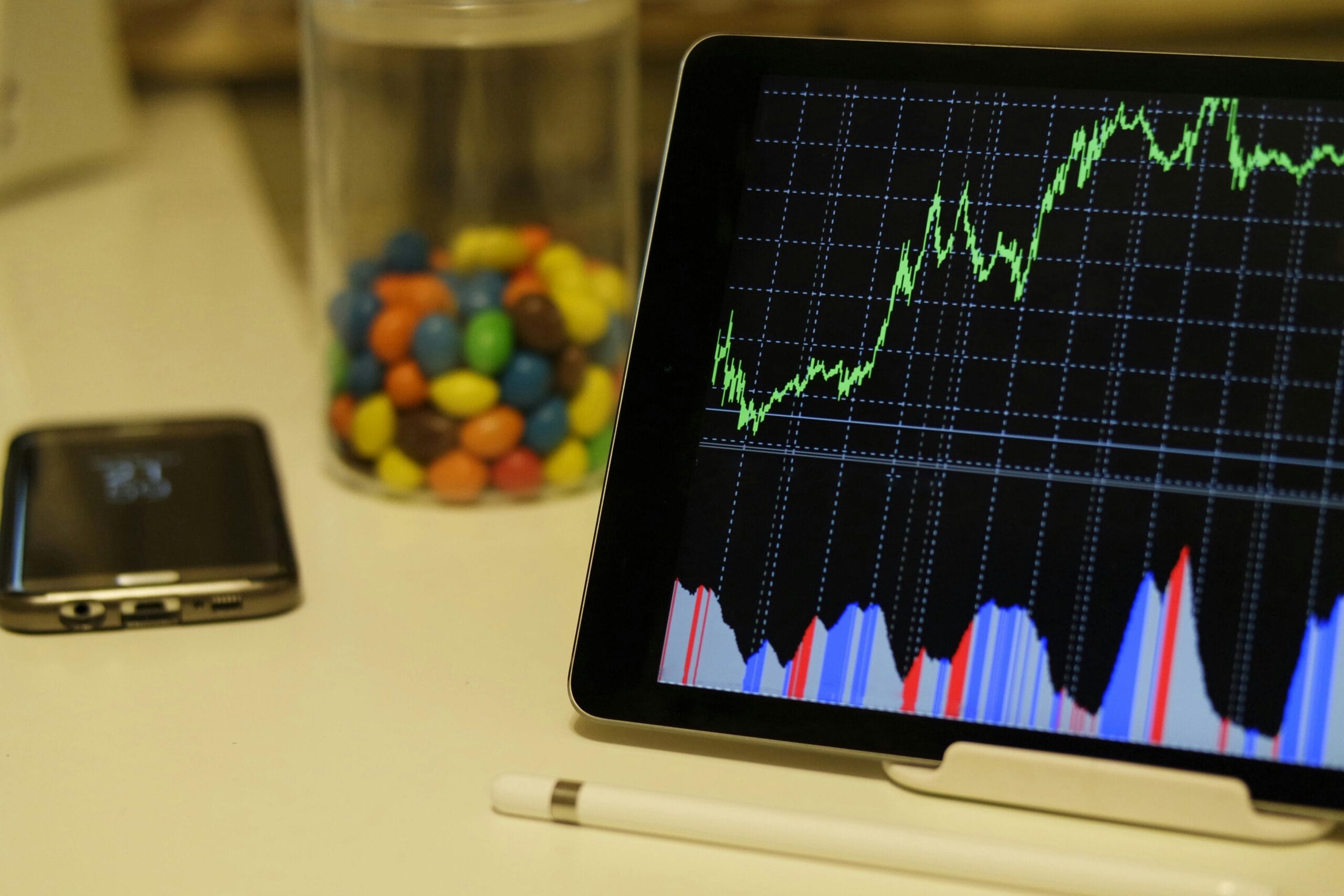Most people think the stock market is all about numbers and charts. However, there’s something far more interesting happening beneath the surface. In fact, the stock market is actually the world’s largest diary of human emotions, written in real-time by millions of people simultaneously.
Reading Between the Lines of Market Movements
Think about your own diary for a moment. Typically, it reflects your hopes, fears, excitement, and anxiety. Similarly, the stock market does exactly the same thing, except on a massive scale. Moreover, every tick up or down tells a story about what millions of people are feeling right now.
When you look at it this way, everything changes. Instead of seeing random price movements, you start seeing emotional patterns. Furthermore, these patterns repeat themselves because human emotions are surprisingly predictable. Consequently, understanding this emotional diary can make you a better investor.

The Morning Mood Swing
Here’s something fascinating that most people miss. The stock market has moods that change throughout the day, just like people do. Initially, when markets open, there’s usually a burst of energy. This happens because traders have had all night to process news and build up emotions.
Therefore, morning trading often reflects overnight anxiety or excitement. Additionally, this is when you see the biggest emotional reactions to news. Subsequently, prices can swing wildly based purely on how people feel, not necessarily on actual value changes.
In contrast, midday trading tends to be calmer. By then, the initial emotional release has passed. Likewise, people have had time to think more rationally. Thus, prices often stabilize during these hours.
Fear Writes Louder Than Greed
Now, let’s talk about the two main authors of this emotional diary. Naturally, they are fear and greed. However, they don’t write with equal intensity. Interestingly, fear always writes in bold, capital letters while greed writes in regular text.
This explains why markets fall faster than they rise. Essentially, fear spreads more quickly than optimism. Moreover, when people are scared, they act immediately. In contrast, when they’re greedy, they take their time to think things through.
Consider what happens during market crashes. Suddenly, everyone wants to sell at once. Consequently, prices plummet in days or even hours. Meanwhile, recoveries take months or years because confidence builds slowly. Therefore, the emotional diary shows that fear creates dramatic chapters while greed writes slower, steadier stories.
The Herd Mentality Chapter
Perhaps the most interesting section of this diary is what I call the “herd mentality chapter.” Basically, this is when everyone starts feeling and acting the same way. Furthermore, it creates some of the most dramatic market movements we see.
For example, when a stock starts rising, more people notice it. Then, they don’t want to miss out, so they buy too. Subsequently, this pushes prices even higher. As a result, even more people jump in. Eventually, you have a feeding frenzy based purely on collective emotion rather than company value.
Similarly, the reverse happens during sell-offs. Once enough people start selling, others panic and join in. Consequently, prices crash even though the company’s actual worth might not have changed much. Thus, we see how powerful collective emotions can be in shaping market reality.
Understanding these emotional patterns becomes crucial, especially when markets experience chaos and uncertainty. Specifically, knowing that you’re reading an emotional diary helps you separate feelings from facts.
Your Own Emotional Fingerprint
Here’s where things get personal. Not only does the market have emotions, but you’re also adding your own emotional entries to this diary every time you trade. Moreover, your unique emotional fingerprint affects your investment decisions in predictable ways.
Some people are naturally optimistic writers. Generally, they see opportunities everywhere and buy enthusiastically. In contrast, pessimistic writers see danger around every corner. Consequently, they sell too quickly or never buy at all.
Meanwhile, there are impulsive writers who react to every small movement. Alternatively, some people are paralyzed writers who can’t make decisions at all. Therefore, understanding your own emotional writing style is just as important as reading the market’s overall mood.
The Wisdom Hidden in Emotional Patterns
Interestingly, learning to read this emotional diary gives you an edge. Specifically, when you can identify emotional extremes, you can often predict what comes next. After all, emotions swing like pendulums, and they always return to the middle eventually.
For instance, when everyone is extremely fearful, that’s often the best time to buy. Conversely, when everyone is euphoric, that’s usually a warning sign. However, acting against emotions is incredibly difficult. Nevertheless, understanding market dynamics during turbulent times can help you make rational decisions when others are being emotional.
According to financial market research, understanding your emotional relationship with money is key to successful investing. Furthermore, this knowledge helps you create strategies that work with your personality rather than against it.
Rewriting Your Investment Story
So how do you use this diary concept practically? First, start observing the market as an emotion detector rather than just a price tracker. Then, ask yourself what emotion is being expressed right now. Is it fear? Excitement? Uncertainty? Boredom?
Next, compare that emotion to historical patterns. Often, you’ll notice that similar emotional states led to similar outcomes. Therefore, you can make more informed predictions about what might happen next.
Additionally, keep your own emotional diary as an investor. Specifically, write down how you felt when you made each investment decision. Later, review these entries to identify your emotional patterns. Consequently, you’ll learn when your emotions help you and when they hurt you.

The Long-term Narrative
Looking at longer time frames reveals even more interesting emotional stories. Generally, bull markets tell stories of growing confidence and optimism. Gradually, people start believing that good times will last forever. Eventually, this collective optimism becomes excessive and unsustainable.
On the other hand, bear markets write tales of fear and doubt. Initially, people are just cautious. Progressively, caution turns to fear, and fear turns to panic. Finally, despair sets in, and people believe things will never improve. Ironically, that’s often when the next bull market begins.
Therefore, the biggest emotional cycle in the market is this swing between excessive optimism and excessive pessimism. Meanwhile, reality usually sits somewhere in the middle. Thus, the investors who succeed are often those who can read these emotional extremes and bet against them.
Learning the Emotional Language
Understanding the broader financial ecosystem helps you interpret these emotional signals better. Moreover, different markets and sectors have their own emotional dialects.
For example, tech stocks tend to be more emotionally volatile. Basically, they attract more passionate writers on both sides. Conversely, utility stocks are emotionally stable and boring. Subsequently, they attract more conservative, cautious writers.
Similarly, small-cap stocks have more dramatic emotional swings than large-cap stocks. This happens because fewer people are writing their stories. Consequently, individual emotional voices have more impact on the overall narrative.
Writing Your Own Success Story
Ultimately, succeeding in the stock market isn’t about predicting numbers. Instead, it’s about understanding and managing emotions, both yours and the market’s. Furthermore, once you see the market as an emotional diary, everything becomes clearer.
Start by becoming a better reader of emotional patterns. Then, work on controlling your own emotional entries. Additionally, remember that the best investors aren’t necessarily the smartest or most informed. Rather, they’re the ones who can remain rational when everyone else is being emotional.
Moreover, don’t try to eliminate emotions entirely. After all, they’re what make markets work in the first place. However, learn to recognize when emotions are overwhelming logic. Subsequently, you can make better decisions at crucial moments.
The Never-Ending Story
The beautiful thing about viewing markets as an emotional diary is that the story never ends. Every day brings new emotional entries. Furthermore, while the specific details change, the emotional patterns remain remarkably consistent over time.
Therefore, whether you’re a new investor or experienced trader, this perspective offers fresh insights. Essentially, you’re not just analyzing companies or economic data. Instead, you’re reading the collective emotional state of humanity and making decisions based on that understanding.
Remember, successful investing isn’t about being right all the time. Rather, it’s about understanding the emotional landscape well enough to make good decisions more often than bad ones. Consequently, start reading the market’s emotional diary today, and you might find yourself writing a much more successful investment story tomorrow.
The Bottom Line
The stock market will continue writing its emotional diary whether we pay attention or not. However, those who learn to read it gain a significant advantage. Moreover, by understanding both the market’s emotions and your own, you can navigate uncertainty with more confidence.
So next time you look at stock prices, remember you’re not just seeing numbers. Instead, you’re reading millions of emotional entries written simultaneously. Therefore, ask yourself what emotion is dominating right now, and more importantly, what emotion will dominate next. In the end, that’s often the key to investment success.



